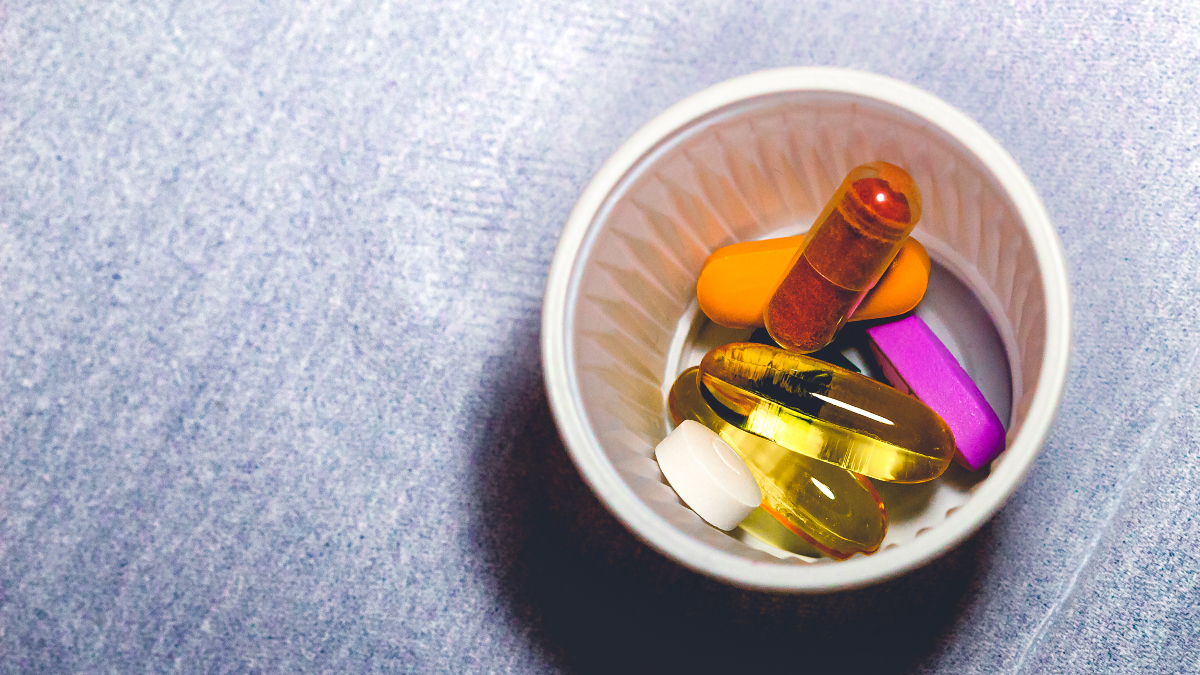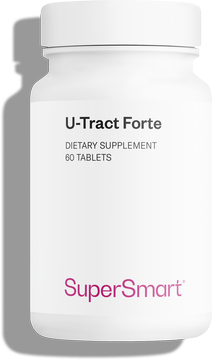Is it possible to combine different dietary supplements? How should you go about it?
Can you combine several different dietary supplements at the same time? How can you gain maximum benefit from their combined effects? This article has the answers.

Is combining different dietary supplements a good idea?
The answer is simple: yes! You can quite happily take different supplements to boost and diversify your intake of vitamins, minerals and phytonutrients – provided, that is, they are of good quality.
What’s more, when certain supplements are combined, it produces a synergistic action which enhances the desired effects (1).
Naturally, you still need to follow a few rules to ensure the choices you make for combined supplementation are safe and healthy.
Respect the doses indicated
If it’s important to follow the dose recommended by the manufacturer when taking a single supplement, it’s absolutely essential when combining several of them!
The number of capsules per day, the best time to take them, etc – this crucial information usually appears on the packaging and ensures a sufficient level of nutrient absorption. So always make sure you refer to it.
Combining supplements to tackle one or several problems
When supplements are combined appropriately, they offer real flexibility of use.
Broadly speaking, there are two main approaches to combining supplements:
- to press a specific ‘lever’: here the focus is on the ‘synergy’ effect to address your particular issue (an example would be the AntiOxidant Synergy and Liposomal Vitamin C combo, which cleverly combines the antioxidant effects of turmeric, bilberry and grapeseed with those of vitamin C) (2); li>to address several different aspects simultaneously, where each supplement acts on a specific element and you can therefore judge its individual efficacy – before potentially opting for other supplements that work synergistically in these various fields of action.
You’re free to decide! You can always seek advice from a health professional to help you devise a personalised plan.
Avoid ‘doubling-up’ on the same active compounds
Tackling problems head-on can sometimes inadvertently result in some overlapping of substances. To avoid any risk of ‘overdosing’, you simply need to keep a close eye on the different formulations.
Let’s say, for example, that you were supplementing with coenzyme Q10, as well as CoQ10 + Tocotrienols. Rather than combining two supplements with a high Q10 content, opt for a product which contains other heart-healthy nutrients (such as Triple Protect, rich in vitamins and plant extracts).
Leave a break between two courses of supplements
Instead of taking and combining supplements continuously, take a break from time to time to give your body a breather. To avoid getting ‘used to’ particular supplements, leave a few weeks between courses of the same product.
Don’t combine incompatible supplements
There are obviously some supplements which have opposing effects and should not be taken in combination.
If, for example, you’re having trouble sleeping, you may decide to supplement with passiflora, a plant which promotes restorative sleep (such as with the product Advanced Sleep Formula, which also contains melatonin and valerian). Don’t then take anything at the same time that contains caffeine, theine or maca as it will send ‘mixed messages’!
Rest assured you can still take supplements containing these stimulating substances to help get your day off to a good start, but make sure you do so in the morning.
Be careful if you’re taking medication
A quick note on supplements and medication: if you’re receiving any drug treatment, you need to exercise more caution. Certain supplements – especially when they’re combined - can interact with medicines, potentially reducing or increasing their efficacy.
One such example is anticoagulant medication designed to thin the blood. If you take a combination of ginkgo biloba and omega-3 supplements, there’s a risk that this blood-thinning effect will become excessive (3).
Similarly, combining valerian and passiflora supplements may increase the drowsiness-inducing effects of anxiolytics (anti-anxiety drugs) and antidepressants (4).
If you are taking a medication prescribed for an under-active thyroid, some precautions may be necessary. If you supplement with iron, calcium, magnesium and/or zinc, you should take them at a different time to your medication to avoid any change to its effect on your thyroid (5). Again, talk to your doctor or pharmacist if you are at all concerned.
Take your supplements at the right time
Whether combined or not, the context in which a supplement is ingested also affects its efficacy.
Certain vitamins, for example, should be taken at mealtimes. The fat-soluble vitamins – A, D, E and K – are best absorbed when taken with food containing fats (6).
By the same token, it’s best to leave a two-hour interval between taking iron and zinc supplements, to maximise their absorption.
To find out more on this subject, read our blog on how the time of day supplements are taken affects their bioavailability.
Coordinating your supplementation with the changing seasons
Over the course of a year, our bodies are subject to shifts in rhythm, especially as the seasons change. Appropriate supplement combinations can actually help restore equilibrium.
Does your hair start to ‘misbehave’ with the arrival of autumn? If so, it may help to supplement with a combination of biotin and zinc, both of which help to maintain healthy hair (7). And as you start to feel the effects of wintry weather, it’s a good time to try a vitamin C and D combo, both of which support good immune system function (8).
A word of warning regarding more vulnerable individuals
As we conclude this article, it’s important to point out that despite all the benefits supplements can bring, they are not necessarily suitable for more vulnerable sectors of the population.
Self-administration of supplements is therefore not recommended for women who are pregnant or breastfeeding, children or people suffering from serious diseases.
References
- van Ballegooijen AJ, Pilz S, Tomaschitz A, Grübler MR, Verheyen N. The Synergistic Interplay between Vitamins D and K for Bone and Cardiovascular Health: A Narrative Review. Int J Endocrinol. 2017;2017:7454376. doi:10.1155/2017/7454376
- Patumraj S, Wongeakin N, Sridulyakul P, Jariyapongskul A, Futrakul N, Bunnag S. Combined effects of curcumin and vitamin C to protect endothelial dysfunction in the iris tissue of STZ-induced diabetic rats. Clin Hemorheol Microcirc. 2006;35(4):481-9. PMID: 17148847.
- Chan AL, Leung HW, Wu JW, Chien TW. Risk of hemorrhage associated with co-prescriptions for Ginkgo biloba and antiplatelet or anticoagulant drugs. J Altern Complement Med. 2011 Jun;17(6):513-7. doi: 10.1089/acm.2010.0295. PMID: 21649517.
- Mulligan GB, Licata A. Taking vitamin D with the largest meal improves absorption and results in higher serum levels of 25-hydroxyvitamin D. J Bone Miner Res. 2010 Apr;25(4):928-30. doi: 10.1002/jbmr.67. PMID: 20200983.
- El-Esawy FM, Hussein MS, Ibrahim Mansour A. Serum biotin and zinc in male androgenetic alopecia. J Cosmet Dermatol. 2019 Feb 3. doi: 10.1111/jocd.12865. Epub ahead of print. PMID: 30714301.
- Shaik-Dasthagirisaheb YB, Varvara G, Murmura G, Saggini A, Caraffa A, Antinolfi P, Tete' S, Tripodi D, Conti F, Cianchetti E, Toniato E, Rosati M, Speranza L, Pantalone A, Saggini R, Tei M, Speziali A, Conti P, Theoharides TC, Pandolfi F. Role of vitamins D, E and C in immunity and inflammation. J Biol Regul Homeost Agents. 2013 Apr-Jun;27(2):291-5. PMID: 23830380.
Keywords
3 Days
Reputable companysearch and the number of…
The research and the number of selection of products.
NAKHJAVAN Shervin
16 Days
The Anti Aromatase is a great product
The Anti Aromatase is a great product. You just need to have constant inventory. Recently this product has been out of stock.
GEORGE Verne
17 Days
Great help on chat
Great help on chat. Knowledgeable and friendly.
Jason Argos
21 Days
Customer service was fast and friendly.
Customer service helped to stop the transaction process of the subscription. I appreciated that.
Greenie
21 Days
I order here due to the high quality of…
I order here due to the high quality of the products and the quick delivery of items - thank you
Barbara J
22 Days
SuperSmart's Eye Pressure supplements: highly recommended!
I purchase SuperSmart's Eye Pressure supplements regularly for over 5 years, and gotta say they are truly a wonderful product for my Glaucoma. Highly recommended if you have eye pain from your Glaucoma.
D. Martinez
27 Days
Quick service
Quick service
MONELL
28 Days
Speedy service.
Speedy service.
ROSENTHAL Marvin
31 Days
Clear website- Efficient
Clear website. Excellent search engine and fast delivery!
Mohamad Hussein
34 Days
They have great products.
They have great products.
Vickie
34 Days
Great Shipping Time!
You Have A Great Shipping Time! Praise The Lord!
DMHoge
36 Days
Doctor Recommended!
Good pricing, very good availability, doctor recommended (couldn't find what I needed anywhere else), and it took only a week to arrive (which I can't complain about).
Al
37 Days
Great product and fast shipping
Great product and fast shipping
Marie
38 Days
New customer 1
I got my order fast and on time.
SA
38 Days
Great Service
Fast, good communication, as promised.
Juli





